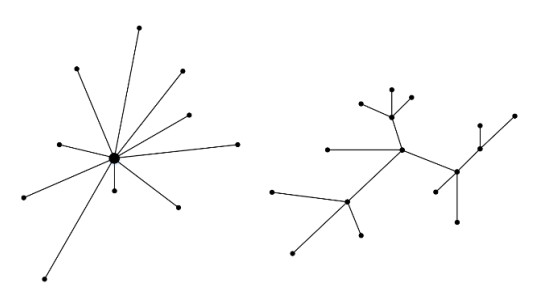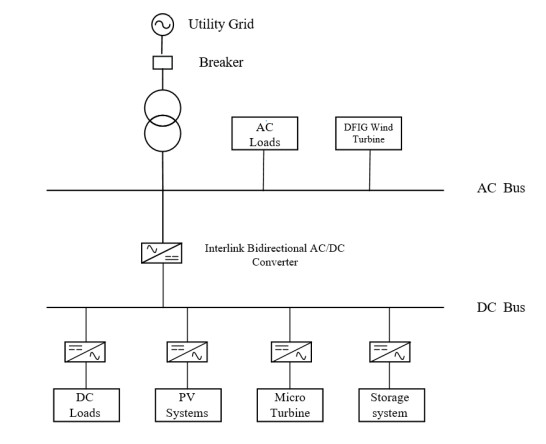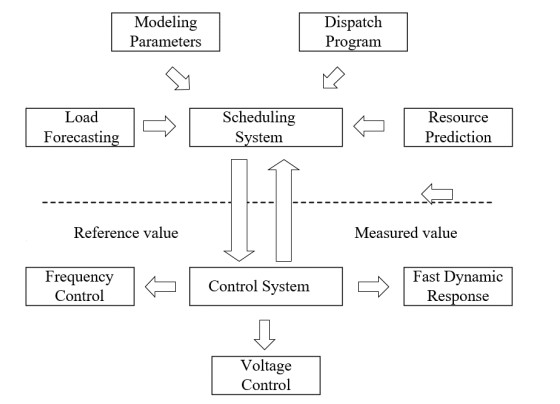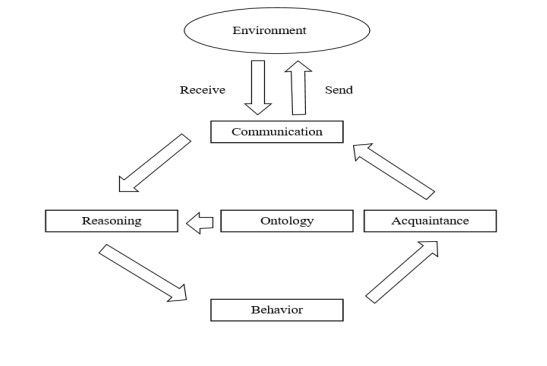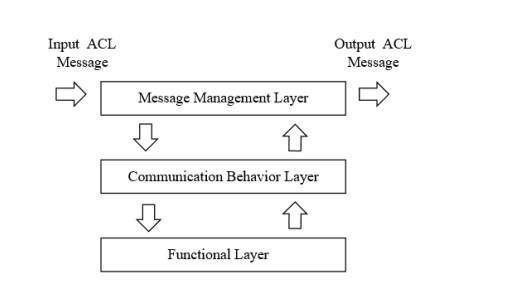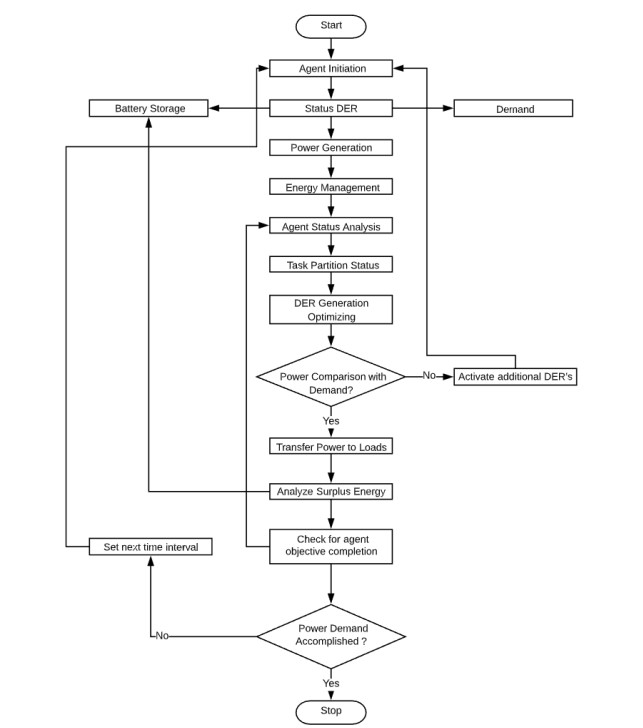Over the last century, there has been no significant change in the centrally controlled structure of electrical power grids. The economic and population growth throughout the planet increases the pressure on the power sector. Power electrical grid, as the main structure for power transmission has to reconsider its concepts. The flexible controlling of DER (Distributed Energy Resources) such as wind power, solar power, hydropower, wave power, geo-thermal power and biomass power has to be considered to overcome these challenges. The demand for electricity is steadily increasing and current centrally controlled structure is ill-suited to fulfill the modern complex power requirements. As a result the concepts like micro grids, smart grids, multi-energy systems, virtual power plants are emerging combined with new concepts like MAS (Multi-Agent Systems) and IoT (Internet of Things). They move our electrical power grid to a more decentralized, highly efficient energy management system. The objective of this paper is to discuss how multi-agent concept based energy management systems will behave for micro grids. The paper contributes a description of smart micro grids, MAS based Energy management systems and controlling of DER in micro grids, and future of power electrical grid structure with MAS.
Abbreviations: ABM: Agent Based Modeling; ACL: Agent Communication Language; ADK: Agent Development Toolkit; CEMS: Centralized Energy Management Systems; DEMS: Distributed Energy Management Systems; DER: Distributed Energy Resource; DSM: Demand-side management; EMS: Energy Management Systems; IoT: Internet of Things; MAS: Multi Agent System; MEMS: Multi-agent Energy Management Systems; MG: Micro grid; PCC: Point of Common Coupling; PV: Photovoltaic; SCADA: Supervisory Control and Data Acquisition; TSD: Two Stage Dispatch
1.
Introduction
The concept behind today’s existing electrical power grid hasn’t been updated for decades. The centrally controlled power system structure can be considered as an inefficient system from various aspects. In a centrally controlled power system structure, the power generation units have no real-time data about the demand or consumer termination points and total structure is created to withstand the peak demand. These conventional power grids need to be upgraded in various aspects such as DSM (Demand-side management), power monitoring, shorter and fewer downtimes, reduced grid losses etc. [1]. The issue is the demand for electricity is steadily increasing and current centrally controlled structure is ill-suited to fulfill the modern complex power requirements [2]. When the demand is increasing, the centralized power system structure is becoming more inefficient and more complex. When considering the expected energy demand of the future world, the global share of electrical energy of total energy consumption is expected to increase from current share 20% to around 23%–27% by 2040 [3]. Due to these facts it is very clear that current centralized power system structure will not be able to supply future electricity demand. Therefore the concepts like smart microgrids, multi-energy systems are emerging with the latest communication technologies to face this challenge. One of the main reasons for this trend is the worldwide power sector increases the renewable power generation. There are a lot of environmentally friendly energy sources (solar, wind, biomass, hydro, and ocean) which we can use for power generation. But controlling these DES’s is a challenge. Flexible controlling of these distributed energy sources is a very difficult exercise for a centralized power system structure. As a result power system is developing towards a more decentralized form from its centralized structure to manage these DER in an optimized manner [4]. The latest Communication based concepts such as MAS and IoT are getting involved with micro grid concept. With these concepts, smart micro grids are following efficient energy management strategies and algorithms. At the same time, it supports the flexible and safe operation of the distributed energy sources and helps to utilize the maximum amount of green energy [5].
There are three basic trends in modern power systems, ‘decentralize, democratize and decarbonizes’ which are known as ‘three D’s’ in modern power system planning. The reasons for these trends are the need for improvement in power system reliability and resilience, CO2 emission reduction as well as, to reduction in the cost of electricity, etc. As a result, microgrids emerged very quickly as the most flexible system architecture for reliable controlling of distributed energy resources [6]. But yet microgrids have to overcome a lot of challenges and issues. A 31.31% annual micro-grid market growth rate is expected from 2013 to 2023 in APAC regions [7]. It is very clear that micro grid concept has a promising and stable future in the power industry.
IoT has become one of the major components of smart microgrids today [8]. IoT based concepts are widely been researched for various micro grid applications. Advanced sensor technologies and wireless communication technologies help these concepts to increase their performance and reliability in smart grid applications [9]. The management of DER’s is a complex procedure in a micro grid and it’s based on information exchange. Introducing IoT for micro grid can be identified as a turning point in evaluation of future electrical network.
Through this review, the authors argue that the MAS system based energy management systems will be the most successful approach for micro grids in controlling DER’s in an optimized manner. In this review, the latest MAS based energy management models proposed for micro grids and MAS based applications in micro grids are discussed. Paper discusses the operation, advantages, latest technological improvements and future of MAS based micro grids referring to latest relevant researches. In this review, authors argue that ABM (Agent based modeling) for micro grids will be able to handle any complex situation not depending on the number of DES’s or the loads handled by a certain micro grid and also presents a review on ABM for micro grid energy management.
2.
Microgrid architecture and its significance
There are number of definitions for MG’s (Micro Grids) and that can be found in the literature [10]. As a general definition, a microgrid is an interconnected group of DER’s and loads which are organized inside certain electrical boundaries and operates as a single controllable unit respect to the grid. Or it can be explained simply as a small-scale or mini power system or network which is designed to supply power for a small targeted community, consisting of local different power generation units. These micro grids connect both electrical power generation units and major utility grid. At the same time, it is capable to operate with/without the grid connectivity, i.e., both grid- connected mode or island mode [11]. Island mode or the isolated mode means the MG is operating without connecting to the public utility grid and grid-connected mode means the MG is operating while connected to the grid. Maintaining the power quality in voltage and frequency of a micro grid system operating in island mode is a challenge. A number of researches have been conducted and control models are proposed for islanded mode operation of micro grids [12]. Generally, a micro grid is consists of an energy management system, control system, power conditioning system, energy storage system, loads and energy sources. Micro grids can include distributed generation units and distributed storage units with different characteristics. The PCC (point of common coupling) of the micro grid is at the connection point of the micro grid and utility grid [13].
2.1. Advantages of micro grids
There are significant advantages of using micro grids for controlling DER’s. The reduction of overall electrical energy consumption and the negative impacts on the environment, reliable energy supply, and higher energy efficiency compared to centralized grids, reduction of transmission losses, flexible control of voltage and frequency, high security of the power supply are some of them. And another important point is micro grid power systems can supply back up to the utility grid in natural disasters or critical situations [14]. Out of all the renewable energy sources, the use of solar photovoltaic energy to generate electricity is rapidly increasing. The total installed solar PV capacity globally is around 403 GW at the end of year the 2017, and out of this total capacity, around 90 GW solar photovoltaic capacity was installed in the year 2017 [15]. This increasing solar photovoltaic energy sources brings various issues to the centralized grid structure about reliability, power quality, stability of frequency etc. [16]. As a solution for these issues, micro grid systems with battery storage units come forward as one of the major partners for the utility grid to share increasing solar photovoltaic capacity [16,17,18]. This is a very significant advantage of micro grid systems. And using microgrid systems are very profitable to the consumers as the electricity consumption during peak hours can be derived using the stored energy in battery bank or output from solar PV unit [19]. Microgrids can be used to give electrification facilities for the rural community and for the areas where the utility grid is not able to reach. This will lead to a positive socio-economic impact on rural areas [20]. There are a lot of positive impacts on the environment by the use of micro-grids as they minimize the use of fossil fuels and increase the share of environmentally friendly energy sources like solar, wind, ocean wave, geothermal etc. [21]. When considering the factors like emissions and water usage (during power generation as well as in technology assembling), micro grids (with renewable DES’s) are very positive than utility grids consisting of conventional power generation methods (Coal, diesel) [22]. For example power plants in the USA use around 11–22 billion liters of water for a day [23]. From the emission factors shown in Tables 1 and 2 below, it can be clearly understood the significant environmental advantages of micro grids with renewable DES’s [24,25,26].
2.2. Technical challenges and drawbacks of micro grids
Micro grids make it possible for bidirectional power flow (export and import power) with utility grid interconnection [27]. Several technical problems may occur due to increased penetration of DES’s. They are protection malfunctions, problems in power quality (frequency, voltage), transient and steady state under-voltages and over-voltages at PCC, short circuit level increments [28] etc. The autonomous operation of controlling mechanisms and protection mechanisms of micro grids are challenging [29]. All the DES’s connected to micro grid should have protection and control mechanism’s to ensure the stability of power quality at PCC. Consider the configuration shown in Figure 3 below.
Power flows from DES’s to PCC,
Power flows from PCC to loads,
When the utility grid is connected to the micro grid, static switch is closed and, by considering the power flows at PCC,
If DES’s operate with unity power factor,
From the above equations, it can be seen that the behavior of the micro grid at the instant of the start islanded mode totally depends on PG and QG.This control is a technical challenge. Different control technologies have been proposed to ensure a stable operation at this point [30,31,32]. And micro grids need considerably high space for battery banks and maintenance cost is quite high. We can list the three major technical challenges are as follows:
√ Islanding
√ Voltage and frequency control
√ Protection
2.3. Energy management systems for micro grids
As the number of DER’s are increasing, the complexity of the network operation increase with it. Problems in energy management optimization in micro grids are discussed in [33]. As a solution micro grid concept, operationally divide the system to decentralized systems [34]. Efficient and reliable energy management systems (EMS) must be there to control these micro grids in both grid connected and islanded operations. Different types of optimization technologies are discussed regarding EMS’s to solve problems in MGs. Some of them are Monte Carlo, Nonlinear Programming, Gradient-based, Simulated Annealing, Game Theory, Optimization Algorithms, Multi-agent Algorithm, Quadratic Programming, Interior Point Method, Bee Colony Genetic Algorithm (GA), Particle Swarm, etc. [35]. Basically there are two energy management system types for micro grids. They are distributed energy management systems (DEMS) and centralized energy management systems (CEMS). In the operation of CEMS, it schedules and monitors the operation of micro grid depending on measured data and system composition. The status of the system must be input to the controller for this operation. But DEMS operates more autonomously and independently. The optimization of DEMS is achieved with the droop control of subsystems or scattered devices. In both types of MEMS’s communication plays a major role to connect the controller units and other devices. The main objectives of MEMS are the safe, economical and stable operation of the micro grids. In a MEMS, the scheduling systems and a control system are used for short term optimal operation and power balancing [36]. They are explained in Figure 4.
Optimal design for scheduling the operation of micro grids for energy management has been a key research area in recent years. A number of successful models have been published in several literatures. A MILP (Mixed Integer Linear Program) based model developed for economical micro grid operation is presented in [37]. A model with an optimal planning framework for micro grid system is presented in [35]. A TSD (Two Stage Dispatch) model based on both real-time and pre- scheduling to dispatch DER’s in micro grids is proposed in [38]. From above facts it’s clear that MEMS (micro grid energy management systems) must be developed to optimize and manage the operation of micro grids [36,39]. There are various types of control algorithms proposed for energy management in micro grids. An extremal optimization algorithm based on adaptive population (APEO) for intelligent P-Q control technique for an optimized P-Q control in a grid-connected inverter based micro grid [40].
2.4. Multi agent systems for micro grids
A MAS (multi-agent system) is an integrated and distributed system of multiple software-based agents [41]. These multi agent systems can be used to control the distributed energy systems in micro grids while achieving all the other objectives of micro grids. The conventional method used for this controlling and monitoring is SCADA systems (Supervisory Control and Data Acquisition). SCADA systems basically operate in a centralized manner and they automate, coordinate, interact, and monitor the operations of subsystems located in remote locations. The intermittent behavior of DER’s brings uncertainty in SCADA systems as sensor data cannot be deciphered [42]. MAS can manage these challenges better than SCADA systems. MAS’s are more successful in controlling the DER’s due to reliable communication and organized structure. For reliable operation in a micro grid, continuous monitoring and controlling should proceed for wind power, solar power, battery levels, loads and dynamic pricing. So it is very important to process the best logical algorithm to get the most optimized solution from all aspects such as safety, economy, and stability [43].
3.
An overview on control technologies of Multi-Agent based micro grids
3.1. Multi-agent systems (MAS)
A multi-agents system in an integrated system with multiple intelligent agents, which are interacting with each other to achieve some set of objectives or complete certain tasks. An agent is a software which performs autonomous, logical, or predefined actions to achieve the objectives of that system [44]. These agents are with self-accommodated features such as autonomy, scalability and flexibility with a capability of solving system issues with complexity up to any extent as a team. MAS’s have this ability as these agents, or intelligent and autonomous unit’s work as a group to accomplish the overall system requirements. Agents continuously getting updated with the system status and agents have total control over their internal status and behavior and actions.
3.2. Categorization of multi agent systems based on features
3.2.1. Hierarchy
An agent of a MAS can define objectives and capable of defining goals for the other agents in the MAS. It can be considered as a leadership quality of an agent. Depending on this quality we can basically identify two types of MAS’s can be identified. They are leader follow MAS’s and leaderless MAS’s. In leader follow MAS, the process of other agent is directly affected by a leader agent. And in leaderless MAS’s every agent has decision making authority and autonomously take actions to achieve design objectives.
3.2.2. Linear/Non—linear decision function
MAS’s can be categorized based on the variation of decision function output of MAS with input parameter variation. If the decision function output is proportional to the input variations from the environment it is categorized linear and they can be simply analyzed mathematically. In a non-linear MAS the decisions are not proportional to the input parameters sensed from the environment.
3.2.3. Communication
Agents in a MAS are capable of exchanging information in-between through bidirectional communication channels. Data or information communication can be either event triggered or time triggered. In time triggered MAS’s, the agents collect data through sensors, process them and share them with other relevant agents continuously in pre-defined time intervals. In an event triggered MAS agents only communicate when a certain change occurs in the environment or as a scheduled task.
3.2.4. Topology
MAS’s can also categorized according to the topology. Agent locations and relationships in-between agents vary. There are two basic types, static topology and dynamic topology. In static topology there is no change in the relationships of an agent with other agents and the location in the environment is stable. But in dynamic topology, agent location in the environment changes with time and the relationships or communication patterns with other agents also changes.
3.3. Operation of agents in MAS based micro grids
Agents in a MAS can be used to control most of the challenges successfully which current micro grids have to face. Balancing the power demand and power supply, energy pricing, energy storage management, restoring energy, manage power outages, isolate faults etc. are some of them. The qualities of agents when operating in a MAS such as controllability, synchronization, connectivity and formation can be used to address challenges faced by micro grids. In this section, the operation of an agent in a MAS based micro grid will be discussed.
In a Multi-Agent system number of autonomous or intelligent agents work in a micro grid environment to achieve optimal results in operations. The operation of an agent can be explained using the three-step architecture as shown in the following Figure 6.
As shown in the Figure 6, the input signal or Input ACL Agent communication language basically go through three steps to transfer the input message to a functional output command. The agents are able to achieve their assigned objectives through this message processing steps. These agents are the basic unit of a MAS, and located in MG environment and have the ability to operate independently or as integrated units to achieve the designed objectives of the MG [59]. The operation of a MAS in MG environment can be explained using a flow chart as shown in Figure 7. A MAS operation procedure for a distributed micro grid is displayed in the flowchart. The distributed micro grid starts after selecting a suitable initializing set point. Then the status of the local agents are checked, which were given the responsibility of local distributed energy generation units. After that step, the necessary measurements of load demand of the system and available power generation amounts are taken. Depending on those measurements the agent decides whether to store or supply power to fulfill the demand from the system. The agent is capable of taking the decisions after this step depending on the pre-given instructions or the programmed algorithms. Also the agent is capable of optimizing the DES generation considering the environmental or economic factors and then gives the commands for the relevant generation units.
After above step, agent compares the power demand with the generation and if the demand is higher than the generation, the agent commands to activate the additional DES, in the most optimized way. So if the generated power is higher than demand then agent releases the commands to transfer the power to the relevant loads. After this step agent gets data/measurements of the surplus energy and if possible, surplus energy is stored in battery storage units. This is the procedure which an agent can go through in controlling the DES in an optimized manner. In this manner, the multi agent system can be designed to achieve the design objectives of a micro grid. The basic objectives are generation scheduling, generation monitoring, and controlling the micro gird for optimized operation. Reference [60] has proposed a control framework for a micro grid based on multi agent concept (MAS). That framework makes central control agent to operate in rapid control manner and obtain economical optimization for the micro grid in both islanded and grid connected operations. For that the central agent regulates the power of different DES (distributed energy sources) and guarantee a safe and steady power supply. As the micro grids contains renewable energy sources like solar systems and wind power systems, the system frequency can be very easily fluctuated and keeping the system frequency in steady manner is a complex process. The fluctuation of frequency mainly depends on supply and demand balance of the micro grid. To control the frequency in a steady manner, balancing the power supply with the power demand is very significant. To achieve that the micro grid system should obtain the following conditions.
where,
Active power amounts provided by fuel cells and micro turbines can be taken as an addition of initial active power and the variation of active power of each DER’s and following relationships can be developed.
A statement for active power from DER’s can be written.
In order to protect the system balance and to control the frequency in a steady manner, balancing the power supply with the demand is the key factor.
3.4. Multi-agent system modeling and challenges
Modelling MAS’s is a complex procedure as parallel operation of multiple agents have to be considered. Matlab/Simulink can’t be used to develop a successful model for multi agent systems as parallel operations and communication network should be simulated to model MAS’s. Number of ADK’s (Agent Development Toolkits) are available which can be used for modeling and developing multi agent systems. An ADK has the ability to create runtime environment where multiple agents can process and achieve local and global objectives. Number of factors have to be consider when selecting an ADK such as communication technology, Language, GUI (graphical user interface), Security, Source availability (Open source/not) etc. The most commonly used toolkits are JADE, ADK, Jack, Jason etc. There are lot of modeling challenges that have be overcome. Most of the agent development toolkits are very less user friendly and GUI’s, graphical tools are not fully developed. These modeling challenges have to be addressed in the future.
3.5. Applications of multi agent systems in micro grids
It is very significant to understand the MAS plus points or the MAS concept applications in a micro grid. One of the main applications is a situation when need arise to add a new power source to a micro grid. With the use of MAS, a new power source can be added to a micro grid without doing any modification in existing units. It is a very significant advantage. And a MAS based micro grid can connect or disconnect (grid connected mode/isolated mode) from the grid in a seamless, rapid manner. Ability to control the active power and reactive power independently of a micro grid is a significant advantage. At the same time a MAS based micro grid can correct system imbalances and voltage sags [61]. When considering the current applications of the micro grids it can be noticed that micro grids can meet very high dynamic load requirements [52]. In addition, traditional centralized micro grids are very complex with large infrastructure for communication channels and very high complexity in central supervising unit. But in MAS based micro grid, the local agents are working autonomously, they are responsible to take actions for local events depending on local information’s [53]. Therefore local information based local control can reach the global objectives. It is the main idea of multi agent concept [63]. MAS’s can be basically used in distributed control, Electricity trading, Optimization, Power Restoration [62,64]. The applicability of basic hierarchical Multi Agent system concept in distributed control of a micro grid is demonstrated [65]. Another MAS based distributed control model for micro grids are discussed in [61]. In fuzzy logic based systems and AI based algorithms are used for load forecasting and generation planning. A Multi agent based energy management system is proposed for distributed source controlling based on fuel costs, power demands in micro grids (dispatchable and non-dispatchable loads), environmental emissions, fuel consumption etc. [66]. And in considering the applications where MAS concept is used for electricity trading, MAS based models are used in various market modeling analysis and different electricity trading models [67,68,69]. Most of the MAS based electricity trading models have researches has focused on increasing the revenue from micro grids, price determinations, price mechanisms based on supply and demand of power, economic measures etc. Optimizing micro grid operations can be simply explained as preventing local power outages and maintaining continuous and quality power supply in a cost effective and efficient manner. Multi agent systems can be used to make micro grid more and more economically viable. MAS based concepts are proposed to power restoration processes of micro grids and discussed in [70,71].
3.6. Future of MAS based micro grids
In future distributed renewable energy sources will be the major source of electrical energy throughout the planet. As a result the use of micro grids will be essential for future power systems. The outcome of this study proves that the MAS concept can be very successfully applied to energy management in micro grids. And it also proves that MAS can find solutions for the issues in current micro grids such as week interaction between sources, voltage regulation, frequency regulation, communication delays etc. And as reviewed in this literature MAS can also be used in economic scheduling, switching topologies, energy optimizing etc. Large number of researches are being conducted on this field and various successful models are developed for different micro grid applications using multi agent concept. The proposed MAS models for micro grids or distributed energy management with their applications are as follows.
MAS based concepts will be used in various applications in micro grids in future. The key areas where micro grids should improve such as coordination, stability, protection are being researched. MAS based micro grids can be expected to operate in near future.
4.
Conclusions
A number of latest researches have proposed MAS based architectures to optimize the energy management in micro grids. MAS’s have been a key research background for the researchers working on optimized controlling of DER’s in microgrids. Introducing IoT based concepts for microgrids seems to be the most critical turning point in the evaluation of microgrids. This paper reviews the significance of MAS (Multi agent system) concept-based approaches for the development of EMS’s (Energy management systems) for micro grid concepts. The recent MAS based research approaches for micro grid EMS systems have been successful in the simulation level. These researches should move forward from this level. The pinnacle of these continuous researches would be an intelligent energy management system for micro grids and a complete control system which address stability, protection and coordination issues in micro grids.
This paper discussed the positive features of MAS based micro grids and how MAS based approach can find solutions to the current issues and challenges in micro grids. It is very clear when referring to the above discussed facts that, the centralized grid structure will no longer be able to bare the pressure on increasing demand for electricity. Thus in this review, it’s proved that micro grids play a key role in the decentralization and revaluation of electrical power grids. In this review the authors argue that the MAS system based Energy Management system will be the most successful approach for micro grids in controlling DER’s in an optimized manner. Through this review it shows that ABM (Agent based modeling) for micro grids will be able to handle any complex situation not depending on the number of DES’s or the loads handled by a certain micro grid. This paper also presents a review on ABM for micro grid energy management. It is expected that this review can serve as a support for MAS based energy management research field to open up more conversations.
Acknowledgments
The authors gratefully acknowledge the support provided by the Senate Research Committee, University of Moratuwa (SRC /LT/2018/22).
Conflict of interest
The authors of this paper declare no conflict of interest.









 DownLoad:
DownLoad:
